How does the INTP personality fit into the Big Five personality traits?
Reading time: 5 minutes

Gregory Park, Ph.D.
Author
In personality studies, scientific researchers often use a trait-based approach to describing the differences between people instead of using personality types. The most well-established method is the Big Five, which describes differences along five broad dimensions:
Personality types are far less precise than getting exact Big Five measurements, but knowing your personality type can give you a rough idea of where you fall on each dimension.
In the graph below, each dot is an INTP, placed by where they fall on each of the Big Five dimensions. You can see that INTPs can vary quite a bit on any single dimension.
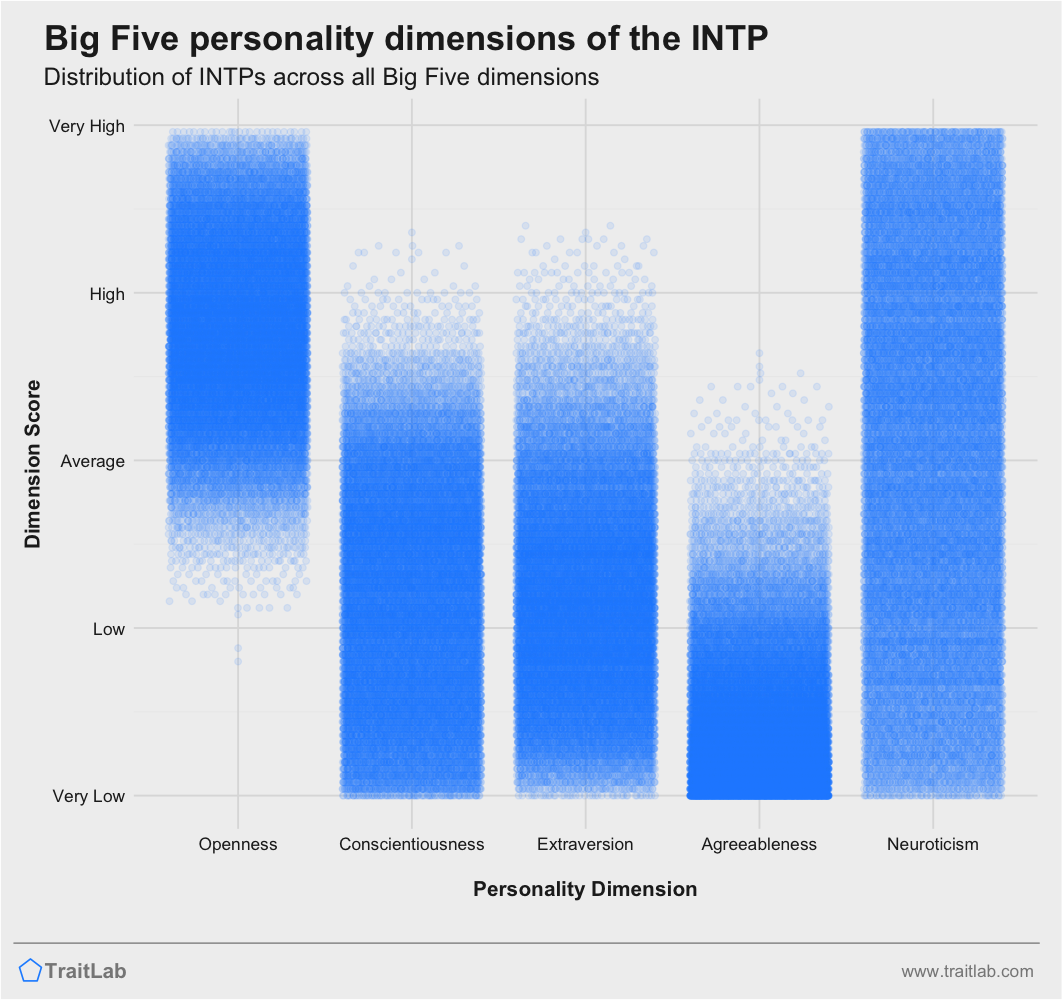
For example, some INTPs fall near the top of the Openness dimension, while others fall closer to the middle or average. However, very few INTPs fall below the average on Openness. So, we can be reasonably confident that an INTP will be average or higher than average on Openness, and an INTP is unlikely to be lower than average on Openness.
Using the same principles, we can profile the INTP personality type across every Big Five dimension.
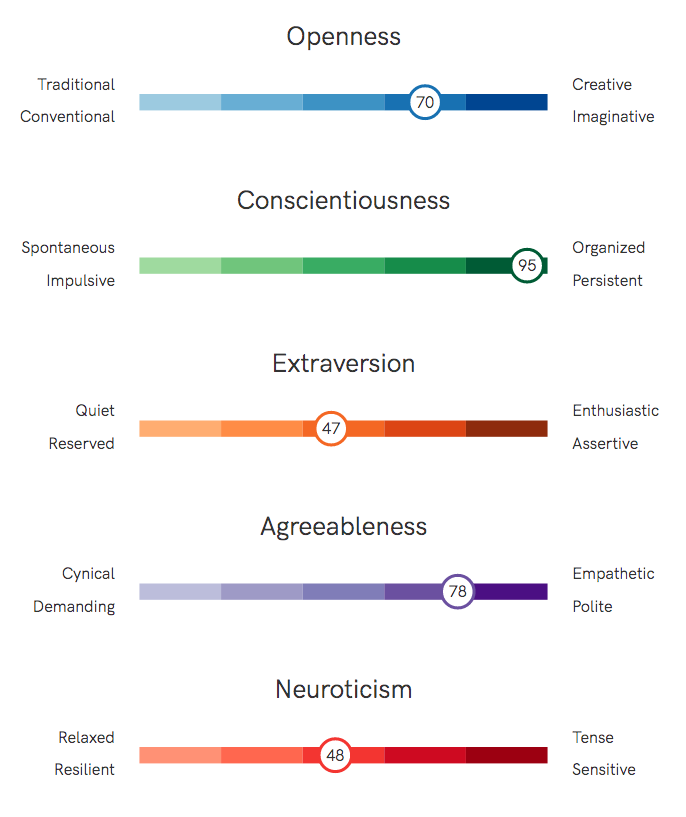
Do you know your Big Five?
Learn about your personality traits and so much more with TraitLab's comprehensive assessment.
INTPs are often score highly on Openness to Experience.
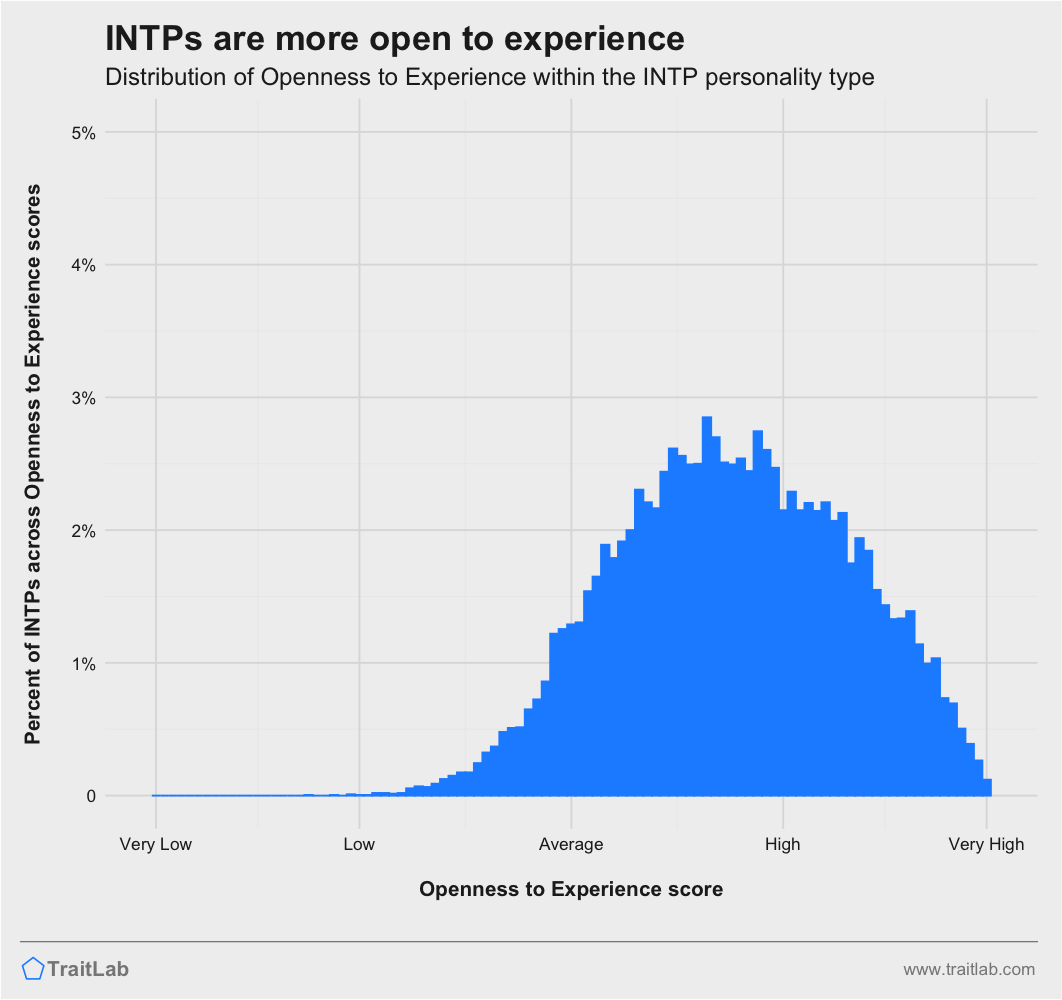
Like most Intuitive types, INTPs are often higher in Big Five Openness to Experience. Highly open individuals tend to seek new experiences, and enjoy absorbing complex information or discussing abstract topics and ideas. They are generally less interested in conventional ways of doing things, or following tradition for tradition’s sake.
INTPs’ high openness drives their need to engage with, learn about, and ultimately solve complex problems.
INTPs tend to be less conscientious than most people.
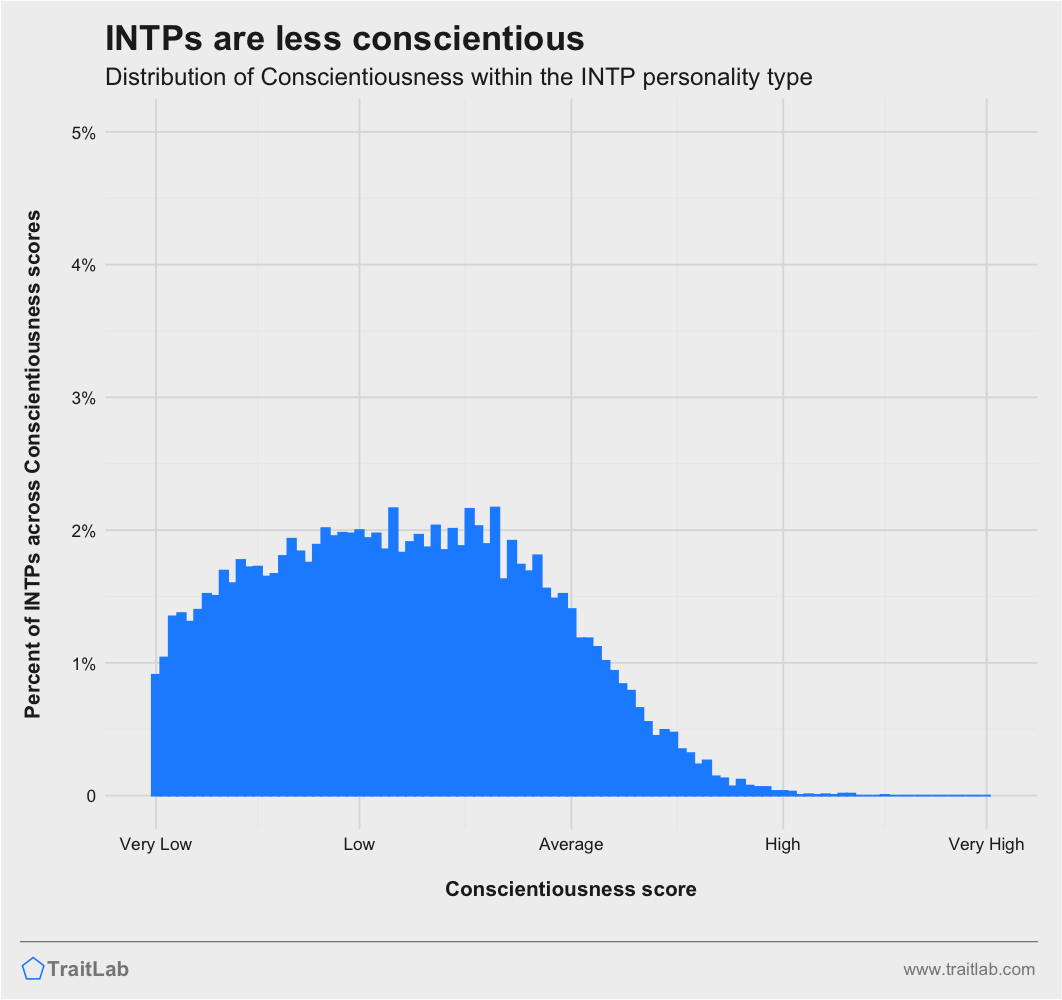
Conscientiousness describes one’s tendency to be highly organized, make detailed plans and schedules, and stick closely to conventional rules.
INTPs’ lower conscientiousness can make them susceptible to distractions and tangents, leading them to chase down details and side paths rather than maintain a strict focus on a single big goal.
INTPs may also be more comfortable with irregularity and disorganization. They will be far less likely than others to stick to a tight schedule or routine or painstakingly clean and organize their surroundings.
Lastly, INTPs will be more comfortable questioning and breaking with commonly accepted rules and regulations.
INTPs often score lower on Big Five Extraversion.
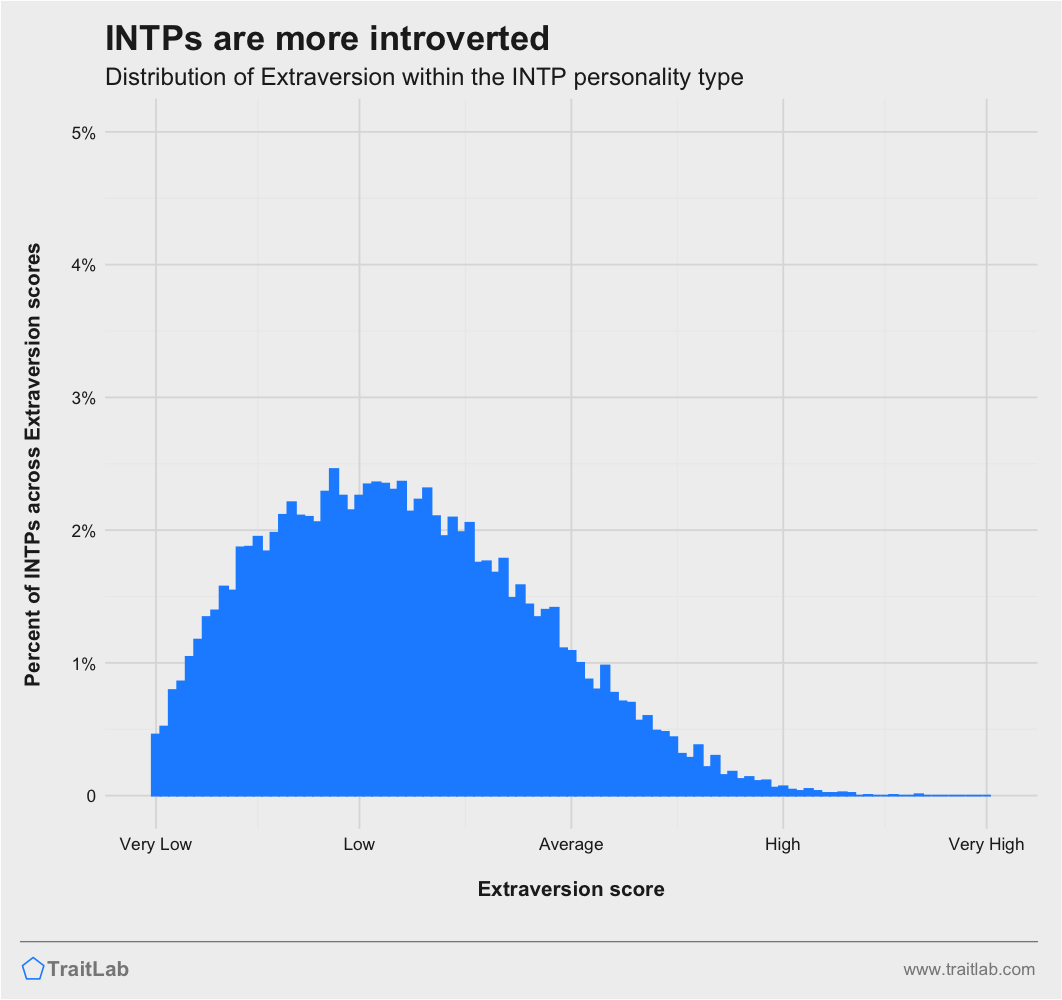
Unsurprisingly, most INTPs are more introverted than most. With a few exceptions, INTPs fall well below average on Big Five Extraversion, which is related to their low enthusiasm, more muted emotional expressions, and a relative ease with social isolation.
Like most introverted people, INTPs will prefer to stay in the background, keep to themselves, and avoid being the center of attention. They can efficiently work and play in isolated, quiet environments and will often prefer it.
INTPs’ higher introversion can also manifest in a more restricted range of positive emotions. INTPs will be less likely than others to smile, laugh, show excitement and enthusiasm, raise their voice, or make small talk.
Many INTPs fall into the lower range of Agreeableness.
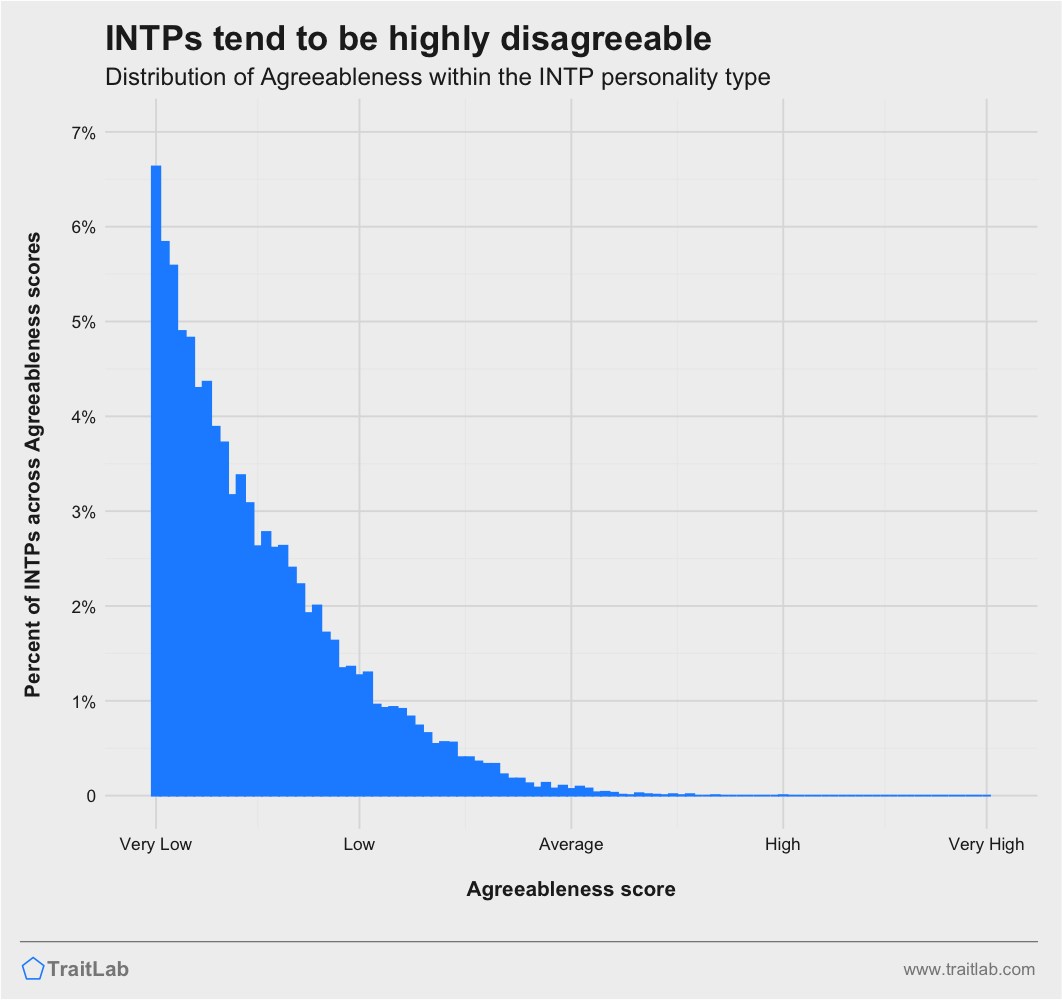
INTPs tend to be much lower on Big Five Agreeableness than most people. Agreeableness describes one’s need to maintain positive and warm relationships with others, or one’s willingness to put personal goals ahead of the others’ feelings.
Less agreeable people may also be described as more demanding, and many INTPs may fit this description. They will typically be less bothered by interpersonal conflicts and disagreements, and will find it easier to criticize or voice unpopular opinions than others.
INTPs can vary widely in their level of Neuroticism.
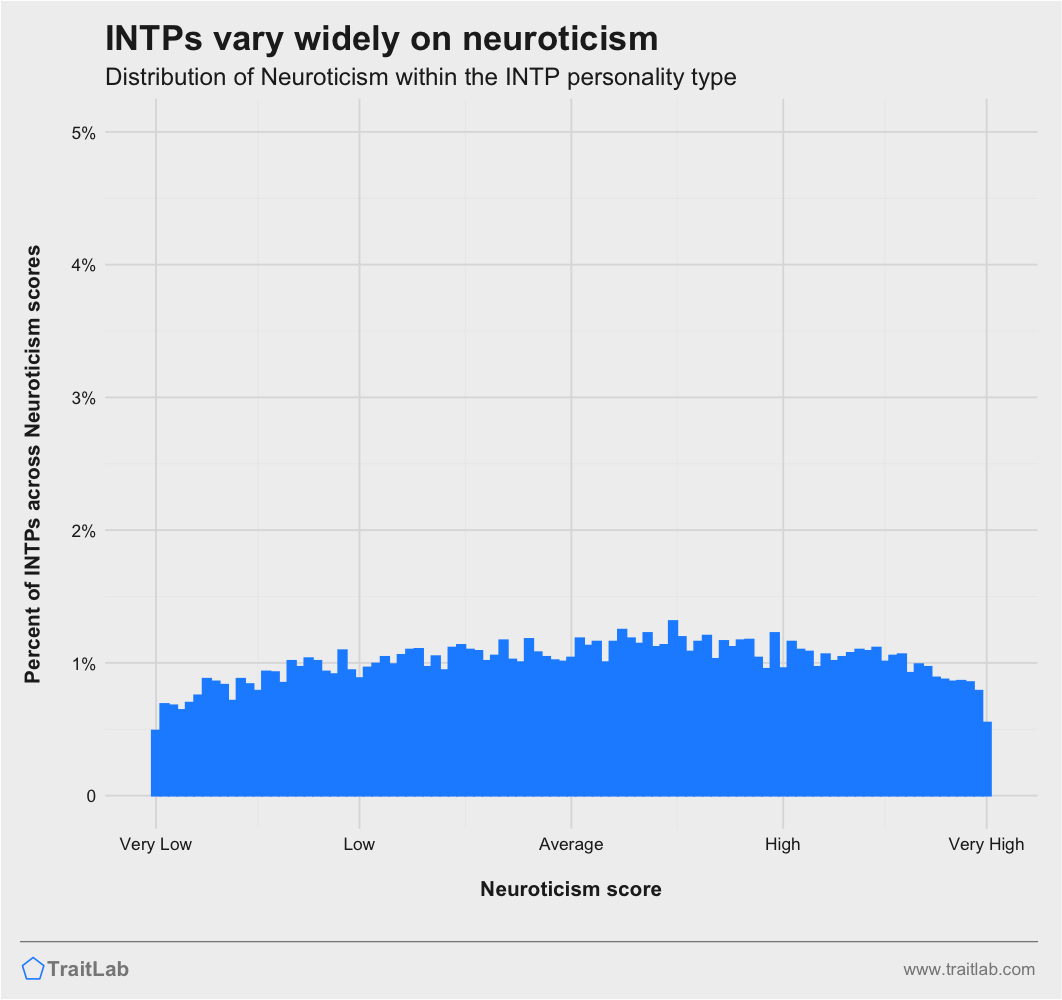
Many INTPs fall on the very low end of Neuroticism, others fall on the very high end, and most fall somewhere in between. In other words, just knowing that you are an INTP tells you nothing about your level of Neuroticism.
Neuroticism is related to emotional volatility and patterns of dealing with stress. Highly neurotic people are more likely to experience negative emotions, including anger, anxiety, depression, and discomfort. High neuroticism is also closely related to one’s tendency to have a negative self-image and ruminate, second-guess, and engage in other forms of negative self-consciousness.
People with relatively low Neuroticism, or high Emotional Stability, tend to react much less to physical and psychological stress, report greater self-confidence, have fewer mood swings, and generally tend to be more relaxed and easy-going.
If you’re curious about your level of Neuroticism, you can measure it with TraitLab’s free Big Five test, along with all of the Big Five dimensions.